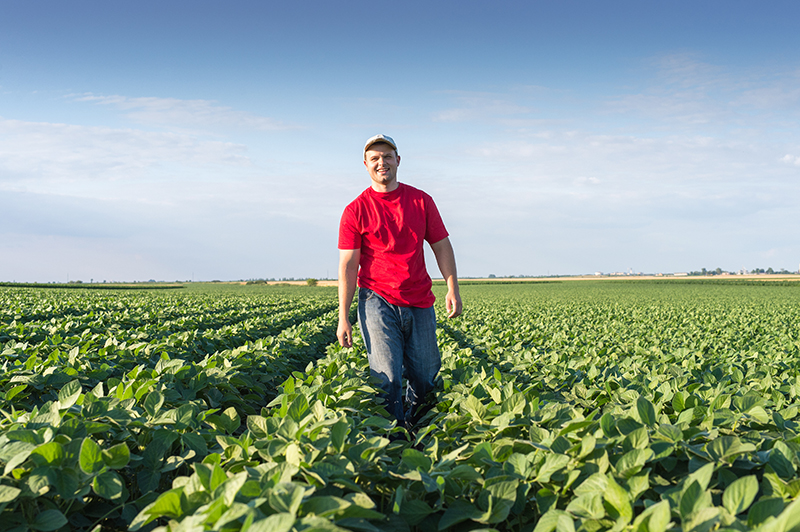Green Weeds Complicate Early Corn, Soybean Harvest
Fields with actively growing weeds from this summer’s drought and recent rains could create problems for farmers during harvest, a Purdue Extension weed scientist says.
That rain, along with early spring-planted crops and the drought have led to fields that contain green weeds along with mature corn and soybean crops.
“It’s a statewide issue [in Indiana],” said Bill Johnson, Purdue University. “Wherever we’ve gotten rain in the past few weeks we’re seeing weeds pop up.”
Late-summer droughts or killing frost usually dry out the ground so new, green weed growth isn’t a problem for farmers. But this year crops are maturing earlier than normal and a killing frost is still weeks away.
Johnson recommended that farmers use herbicides to get rid of weeds and dry out the ground to prevent future weed growth so they can have a timely harvest. But, he said, not many herbicides can be used soon before harvest.
“Herbicide application isn’t mandatory, but it’s good practice. If the weed growth is bad enough, it could create more wear and tear on machinery and hurt grain quality when harvesting crops,” Johnson said.
Harvest equipment is designed to gather mature crops, not green growth. Green weeds going through combines and other harvesting equipment can cause the machinery to break down and delay harvest.
Many fields, especially those with soybeans, are maturing unevenly in face of the extensive drought and will make harvest-aid herbicide applications and harvest in general a challenge this fall.
Green weeds intermingled with corn and soybeans also can cause other problems after harvest. “Weeds can increase moisture in yields and decrease grain quality,” Johnson said.
In a year where crop yields and grain quality are already expected to be low, producers don’t need extra problems like these weeds messing with their harvests.
According to Johnson, weeds that are actively popping up in fields across Indiana include morning glories, velvetleaf, foxtail, winter annuals and cover crops that are already starting to re-germinate.
When applying herbicides to eradicate the weeds, Johnson reminds producers that most harvest aid products are contact herbicides and selection of spray volumes and nozzles is crucial to adequate coverage.
“Choose nozzles that allow for smaller droplets to penetrate the canopy and cover vegetation but are also large enough to avoid drift issues,” he said. Most labels recommend at least 10 gallons per acre for ground applications and a minimum of 5 gallons per acre for aerial applications.
Johnson and Travis Legleiter, a weed science program specialist, advise producers to check the herbicide label for proper application techniques prior to use.






